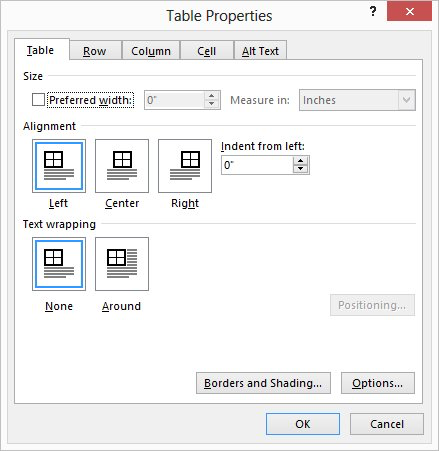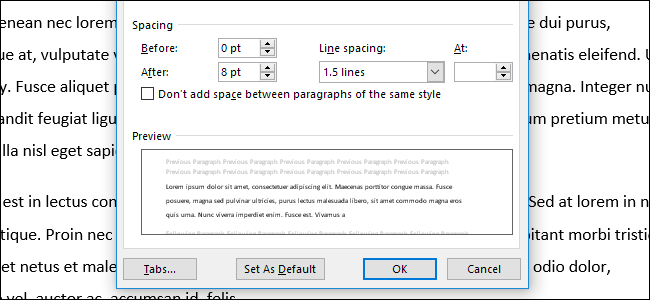
Here’s how a Table looks using a standard single line border but increasing the cell spacing from the default, Zero.Īs you can see, the single line table border becomes a twin gridline just by adding cell spacing to the same table. Go to Table | Alignment | Cell Margins | Default cell spacing | Allow spacing between cells. While cell margins are the space between the text and the edge of the cell, cell spacing puts space around each of the cells.Ĭell spacing has a surprising effect on the look of a Word Table with single line borders. Word’s Table Options have an interesting choice, Cell Spacing. When space is tight, reducing the default left & right cell margins can help fit a table or contents into the available space. Change the Top & Bottom cell margins to separate the lines and improve readability. Here’s a single row, highlighted a little by increasing the top & bottom cell margins.Ĭell margins are useful to separate lines in a table, especially when there’s no gridlines. UNcheck the box ‘Same at the whole table’ then change the margin settings. Select the column, row or cell you want to change then go to Table Layout | Table | Properties | Cell | Options. Table cell margins can be changed for a row, column or even a single cell, but it’s nowhere near the main Cell Margins ribbon button. I have tried 'Paste Special' from the Edit menu (unformatted text, etc.) to remove this extra spacing but, that works only sometimes.
#REMOVE SPACING BETWEEN LINES IN WORD FULL#
You can, of course have different margins on different sides: When I copy and paste text from web pages into Word 2000, much of the time, the lines within the paragraph have spacing between them that ranges from an extra half line to an extra full line. Here’s the large cell margins (left) compared to zero cell margins (right).

For this you can either build a small UDF or you can repeat the REPLACE as many times as needed. The margins we’ve selected above are quite large, just to show you clearly how his setting changes your table. SELECT REPLACE ( A B, , ) SELECT REPLACE ( A B, , ) The problem is that if you have more than two spaces then REPLACE would replace dual spaces only once. In the Table Options dialog that opens, use the spinners to incrementally change each of the four margins, or simply type in the margin that you want into each field Top, Bottom, Left or Right. Then click Cell Margins in the Alignment group. To change the cell margins, we again click in the table and go to the Layout tab on the right. They can be set separately for the top, bottom, and either side of the cells.

If you are using Word 97 then the above steps won't work. Between most words, you’ll see a plain black dot.

When you do this, you will be able to see the odd symbols that are causing the annoying spacing errors. This is necessary because the symbols are so tiny. Next, click the View option in MSWord and Zoom to 200.

I can't delete any of the space between the text. Word contains a very powerful table editor that allows you to create very complex tables. I have a couple of parts of the document where I have a couple of lines at the top of the page and then the rest of the page is blank and then the writing starts again at the top of the next page.


 0 kommentar(er)
0 kommentar(er)
